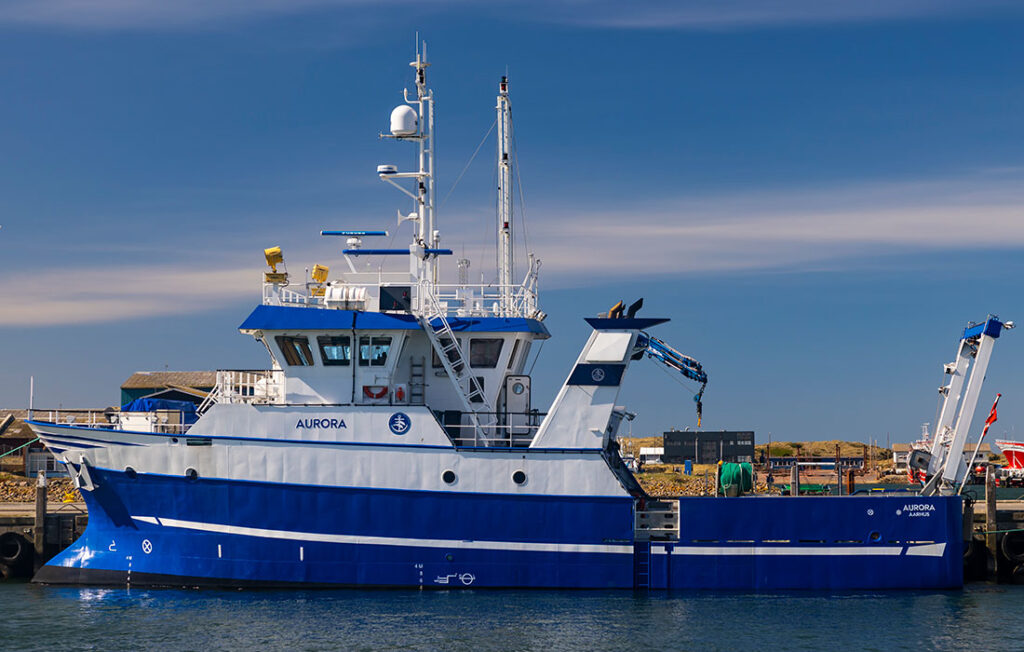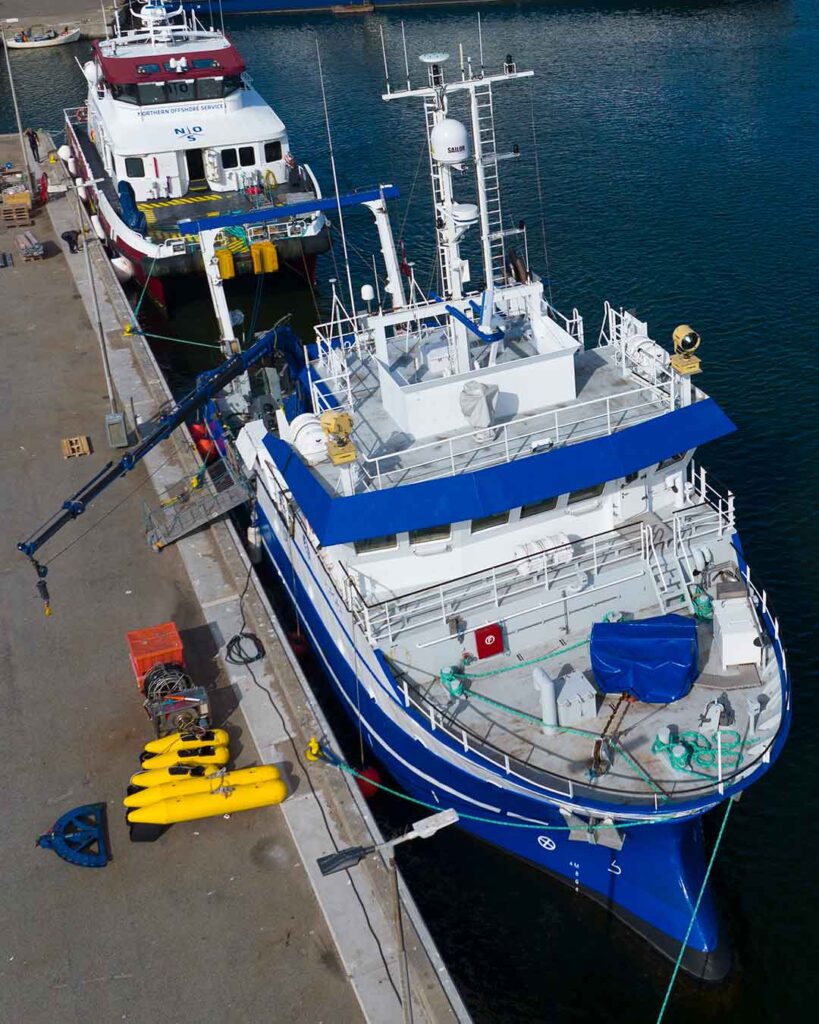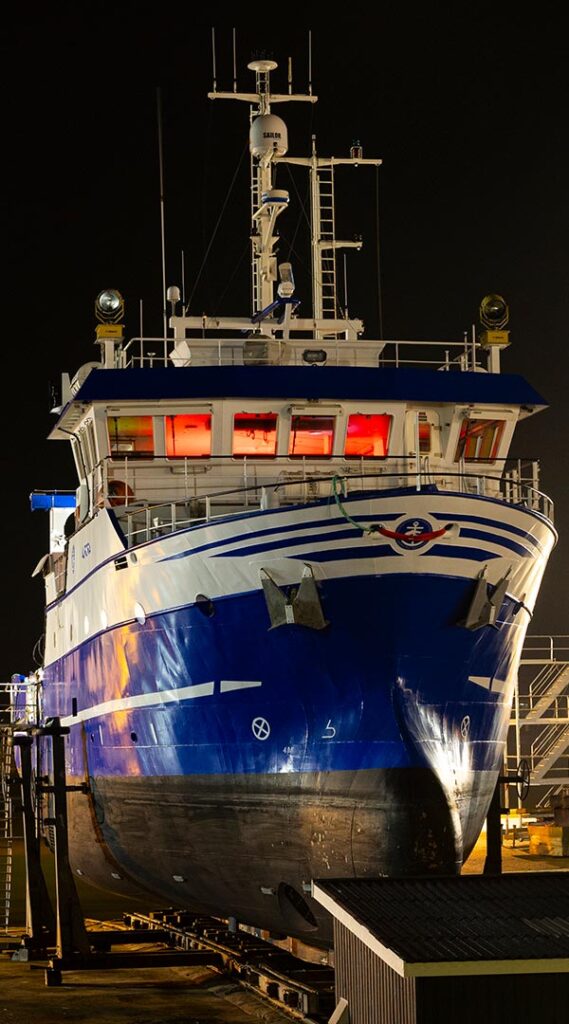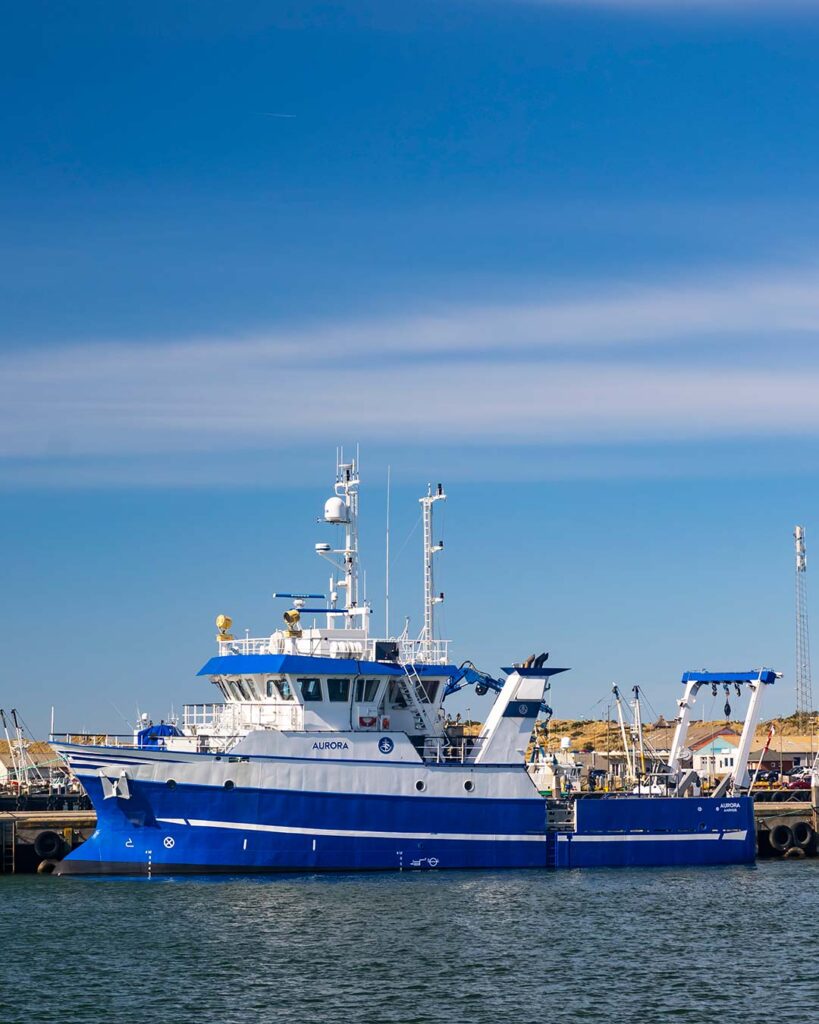NB 130 – Aurora

Research vessel for Aarhus University, Aarhus, Denmark
In March 2014, Hvide Sande Shipyard delivered the top modern research vessel Aurora to Aarhus University. This marked the beginning of a new era in marine research for the university, providing a state-of-the-art platform for a wide range of scientific explorations.
Specifications
| Vessel type | Special purpose vessel |
| Vessel name | Aurora |
| Delivery | March 2014 |
| Description | Research vessel to Aarhus university |
| Hull material | Steel |
| Tonnage | 310 GT |
| Length over all | 28,00 meter |
| Breadth beam | 8,50 meter |
| Depth | 4,34 meter |
| Passengers | 12 passengers / Crew |
| Main engines | 2 pcs. Scania DI13 H71M, 368kW/each |
| ESU (Batteries) | N/A |
| Aux. Engine | 1×74 kW + 1×384 kW |
| Speed(knots) | 11 knots |
| Propulsion | 2 pcs. VP 8 |
| Classification | DMA / hull GL |
| Other equipment | Available |

Reliable multi-purpose research vessel
Aurora has proven to be a multi-purpose and reliable research vessel. Its advanced design and robust construction have enabled it to support various research activities, from marine biology to oceanography. The vessel’s versatility ensures that it meets the diverse needs of the scientific community, making it an important asset for Aarhus University.
Diversity in research tasks
One of the significant challenges Aarhus University faced was the diversity in research tasks. The vessel needed to accommodate different types of scientific equipment and methodologies, which required a highly adaptable design.
This challenge was met with innovative solutions that allowed Aurora and her crew to handle a broad spectrum of research activities efficiently.


Flexible layout with room for both equipment and research teams
Aurora’s flexible layout, with space for both equipment and research teams, was key to overcoming the challenge of broad range of research tasks.
Aurora features a large working deck and gantry for deploying and recovering trawl and heavy equipment over the stern. It is classified to operate in the Baltic and North Sea, with an endurance of up to 10 days at sea.
The aft working deck can accommodate two 20′ containers for technical equipment, such as a seismic air gun array or a specialized laboratory, in addition to the onboard lab. Alternatively, a trawl winch can be mounted. The gantry facilitates the deployment and recovery of trawl and heavy equipment like pistoncore samplers. A sheltered deck with starboard-side doors allows for the deployment and recovery of water samplers and CTDs.
Aurora is powered by two propellers, each driven by a 368 kW Scania DI13 diesel engine, and includes a 150 kW bow thruster for dynamic positioning. The vessel’s top speed is 11 knots.
The ship has three decks:
- Main deck: Contains the galley, stores, combined mess, lounge, meeting room, dry lab, and a sheltered wet lab extending to the open aft deck.
- Below main deck: Houses the engine room and cabins for the crew (2 single rooms for the captain and chief mate, 2 double rooms for deck crew and cook) and scientific crew and students (2 double rooms and 1 four-bunk room).
- Bridge deck: Includes the bridge, ship electronics, and a lower section for computers and equipment used during data collection from multibeam sonar, seismic streamers, and other towed equipment. A platform on top of the bridge is designed for visual surveys of birds and marine mammals.


A wide range of marine research activities
The research vessel Aurora, operated by Aarhus University, is a state-of-the-art, multifunctional ship designed to support a wide range of marine research activities.
Launched in 2014, Aurora is equipped with advanced technology, including a multibeam echosounder and a sub-bottom profiler, which allow scientists to conduct detailed studies of the seabed and sub-seafloor structures.
The vessel’s large working deck and specialized laboratories enable the deployment of various scientific instruments and the collection of diverse marine samples.
Aurora plays a role in environmental monitoring, studying marine ecosystems, and investigating geological formations. It also supports research on climate change impacts and marine biodiversity, making it an invaluable asset for advancing our understanding of the marine environment.
Images


Questions?
Do you want to know more? Feel free to send us your questions or inquiry and we’ll get back to you as soon as we can.